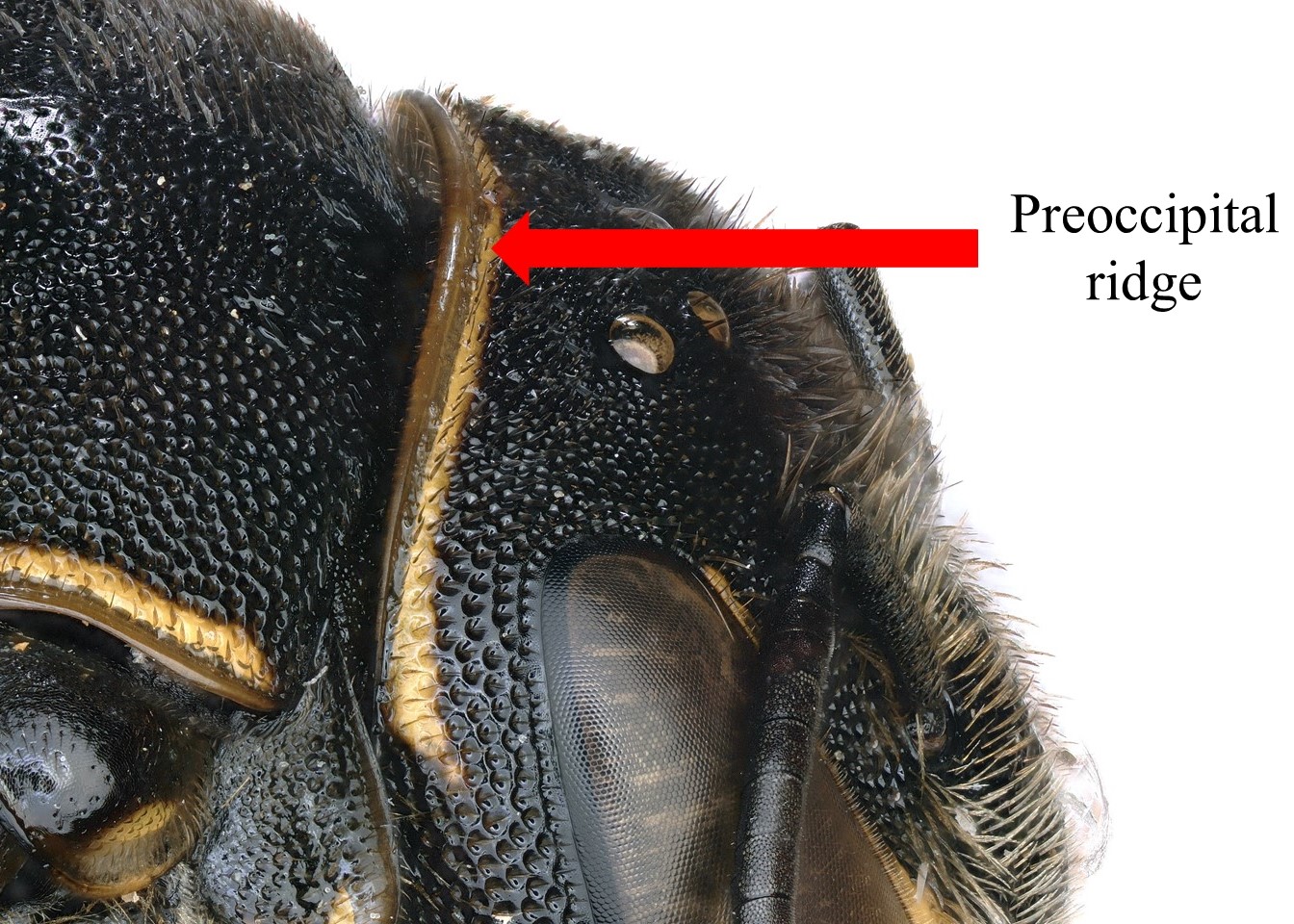Family: Megachilidae
Subfamily: Megachilinae
Tribe: Anthidiini
Genus: Trachusoides Michener and Griswold, 1994
Subgenera: none
Common name: none
Trachusoides are large bees with a body length of 12 mm. They have a black head and thorax and a yellowish-red abdomen (Michener and Griswold 1994Griswold 1994:
Griswold, T.L. 1994. A review of the Ochreriades . Pan-pacific Entomologist 70: 318ndash;321.). This genus is only known from female specimens; male Trachusoides are unknown.
(modified from Michener 2007Michener 2007:
Michener, C.D. 2007. The Bees of the World (2nd ed.). Johns Hopkins University Press, Baltimore and London, 953 pp. unless otherwise stated)
 rounded (Michener and Griswold 1994Griswold 1994:
rounded (Michener and Griswold 1994Griswold 1994:Trachusoides is similar in form to Apianthidium and Trachusa but can be differentiated by the simple tarsal claws in the female (Michener and Griswold 1994Griswold 1994:
Griswold, T.L. 1994. A review of the Ochreriades . Pan-pacific Entomologist 70: 318ndash;321.).
There are no known invasives.
Trachusoides simplex occurs in southern India, and T. elsieae occurs in Laos (Michener 2007Michener 2007:
Michener, C.D. 2007. The Bees of the World (2nd ed.). Johns Hopkins University Press, Baltimore and London, 953 pp.; Griswold 2015Griswold 2015:
Griswold, T. 2015. A review of Trachusoides Michener and Griswold (Hymenoptera: Megachilidae). Zootaxa 3949: 147ndash;150.).
Distribution map generated by Discover Life - click on map for details, credits, and terms of use.
Griswold, T. 2015. A review of Trachusoides Michener and Griswold (Hymenoptera: Megachilidae). Zootaxa 3949:147-150.
Michener, C.D. and T.L. Griswold. 1994. The classification of old worldOld World:
the part of the world that was known before the discovery of the Americas, comprised of Europe, Asia, and Africa; the Eastern Hemisphere
Anthidiini (Hymenoptera: Megachilidae). The University of Kansas Science Bulletin 55:299-327.
Michener, C.D. 2007. The Bees of the World. 2nd ed. Johns Hopkins University Press, Baltimore and London, 953 pp.